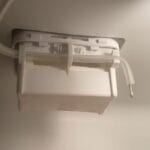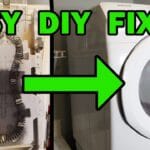Beko condenser dryers are popular for their efficiency. But, they can face issues.
Owning a Beko condenser dryer can make laundry chores easier. But like any appliance, problems may arise. These issues can affect performance and lifespan. This blog will explore common Beko condenser dryer problems. Understanding these can help you troubleshoot and maintain your dryer.
Knowing what to look for can save you time and money. Keep reading to learn about these common issues and how to fix them. Proper care keeps your dryer running smoothly. Let’s dive into the most frequent problems users encounter.

Credit: www.youtube.com
Introduction To Beko Condenser Dryers
Beko condenser dryers are popular choices for modern households. They offer efficient drying solutions. These dryers remove moisture from clothes without venting outside. This makes them suitable for apartments and homes without external vents.
In this section, we will explore why Beko dryers are favored. We will also discuss their basic features.
Why Choose Beko?
Beko is a well-known brand in home appliances. They are known for their reliability. Their products are often affordable. This makes them a great choice for many families. Beko dryers come with energy-saving options. This helps reduce electricity bills.
They are also designed to be user-friendly. This makes operating them easy for everyone. Beko focuses on creating durable products. Their dryers often last for many years with proper care.
Basic Features
Beko condenser dryers have many useful features. They have multiple drying programs. This allows users to choose the best setting for their clothes. The dryers also have sensors to detect moisture levels. This ensures clothes are dried perfectly without over-drying.
Another key feature is the easy-to-clean lint filter. This helps maintain the dryer’s efficiency. The water tank is also simple to empty. Beko dryers often come with a reverse drum action. This reduces creasing, making ironing easier.

Credit: fiveeight0sixsix.wordpress.com
Not Heating Properly
One common issue with Beko condenser dryers is that they may not heat properly. This can be frustrating, especially when your clothes come out damp. Several factors can contribute to this problem, and it’s essential to identify the cause to find the right solution.
Thermostat Issues
The thermostat is a crucial component in your Beko condenser dryer. It controls the temperature inside the dryer. If the thermostat is faulty, the dryer won’t reach the desired heat level. A malfunctioning thermostat might cause the dryer to overheat or not heat at all.
To check the thermostat, you can use a multimeter to test its continuity. If the thermostat does not have continuity, it needs to be replaced. Make sure to use the correct replacement part for your Beko model.
Heating Element Failure
A common reason for a Beko condenser dryer not heating properly is a heating element failure. The heating element is responsible for generating the heat needed to dry your clothes. If it fails, the dryer will not produce any heat.
To determine if the heating element is faulty, you can inspect it visually. Look for any signs of damage or breaks in the element. You can also use a multimeter to test for continuity. If the heating element is defective, it must be replaced.
Here’s a quick checklist for diagnosing heating element issues:
- Inspect for visible damage
- Test for continuity with a multimeter
- Replace if faulty
By understanding these common issues, you can troubleshoot and fix your Beko condenser dryer. Ensure regular maintenance to prevent these problems in the future.
Water Tank Not Filling
One of the common issues Beko condenser dryer owners face is the water tank not filling. This problem can cause your dryer to stop working efficiently. Understanding the reasons behind it can help you fix the issue quickly. Let’s explore some potential causes.
Blocked Condenser
A blocked condenser can prevent water from reaching the tank. Lint and debris build up over time. Cleaning the condenser regularly is essential. Remove the condenser and rinse it with water. Ensure all the lint is gone. Dry it completely before placing it back. This simple step can solve the water tank issue.
Drain Pump Problems
The drain pump plays a crucial role in moving water to the tank. If it malfunctions, the water tank won’t fill. First, check if the pump is making noise. If it’s silent, it might be faulty. You may need a technician to inspect it. Sometimes, debris can clog the pump. Cleaning it can restore its function. Ensure the pump is working before closing the dryer.
Unusual Noises
Beko condenser dryers are popular for their efficiency. But sometimes, you might hear unusual noises. These sounds can be unsettling. They may indicate a problem that needs fixing. Understanding the cause can help you address it.
Loose Parts
One common cause of noise is loose parts. Screws or bolts can become loose over time. They can rattle during a drying cycle. This rattling can create annoying sounds. You might need to tighten them.
Check the drum and panels. Ensure all screws and bolts are secure. This simple check can solve the noise problem. It’s a quick fix that anyone can do.
Worn-out Bearings
Worn-out bearings can also cause noise. Bearings help the drum spin smoothly. Over time, they can wear out. This leads to a grinding or squeaking sound. It can be quite loud.
Replacing worn-out bearings is essential. It ensures your dryer runs smoothly. You might need a professional for this task. They can replace the bearings effectively. This will eliminate the noise issue.
Clothes Still Wet After Cycle
Is your Beko condenser dryer leaving clothes wet after a cycle? This common problem can be frustrating. Understanding the reasons can help fix the issue and improve your dryer’s performance. Let’s explore two main causes: overloading and sensor malfunctions.
Overloading The Dryer
Overloading the dryer is a common mistake. It can prevent clothes from drying properly. When the drum is too full, hot air can’t circulate. This means some items remain wet. Always check the dryer’s manual for the recommended load size.
Keep loads smaller for better results. If you have many clothes to dry, divide them into smaller batches. This ensures each item gets enough air. Your clothes will dry faster and more evenly.
Sensor Malfunctions
Another reason for wet clothes can be sensor malfunctions. Beko dryers have sensors that detect moisture levels. If these sensors fail, the dryer may stop too soon. Thus, clothes remain damp.
Regular cleaning helps prevent sensor issues. Lint and debris can cover the sensors. This affects their accuracy. Use a soft cloth to clean the sensors gently. If the problem persists, consider contacting a professional for help.
By addressing these issues, you can improve your dryer’s efficiency. Your clothes will come out dry and ready to wear.
Error Codes Displayed
Encountering error codes on your Beko condenser dryer can be frustrating. These codes help identify problems but can be confusing. This section covers common error codes and how to reset them.
Common Error Codes
Beko dryers display various error codes to indicate specific issues. Here are some common ones:
E10: This code means there is a water inlet problem. Check the water supply and hoses.
E20: This code indicates a drain problem. Ensure the drain hose is not blocked or kinked.
E30: This suggests a door lock issue. Make sure the door is closed properly.
E40: This code means there is an issue with the heating element. You may need to contact a technician for repairs.
How To Reset
Resetting your Beko dryer can clear minor glitches and error codes. Follow these steps:
1. Turn off the dryer and unplug it from the power source.
2. Wait for about 10 minutes to let the machine reset.
3. Plug the dryer back in and turn it on.
4. Check if the error code has cleared.
If the error persists, consult the user manual or contact Beko customer service. Regular maintenance can prevent many issues. Clean the lint filter and check hoses regularly.
Maintenance Tips
Proper maintenance of your Beko condenser dryer can prolong its life and prevent common issues. Regular upkeep ensures the machine runs efficiently and reduces the risk of breakdowns. Below are some essential maintenance tips to keep your dryer in top condition.
Regular Cleaning
Regular cleaning is crucial for your Beko condenser dryer. Clean the lint filter after every use. This prevents lint build-up, which can reduce efficiency. Use a soft brush or cloth to clean the filter. Don’t forget to clean the condenser unit monthly. Remove any debris or lint to ensure optimal performance.
Inspection Schedule
Follow an inspection schedule to spot potential problems early. Check the dryer vent and ducts every three months. Ensure they are free from obstructions. Inspect the door seal for any signs of wear. Replace it if necessary. Examine the drum for any signs of damage or wear and tear.

Credit: mbdomesticservices.co.uk
When To Call A Professional
When you have a Beko condenser dryer, you may face various issues. Some problems are simple and easy to fix. Others need professional help. Knowing when to call a professional can save time and prevent further damage.
Identifying Serious Issues
There are signs that indicate serious issues with your Beko condenser dryer. If you notice any of these, it’s best to call a professional.
- Unusual noises: A grinding or squeaking sound suggests a mechanical problem.
- Burning smell: This could mean an electrical issue or lint buildup.
- Drum not spinning: This may indicate a problem with the belt or motor.
- No heat: If the dryer is not producing heat, it might be a faulty heating element.
- Excessive vibration: This can be due to imbalanced loads or worn-out bearings.
Choosing A Repair Service
When selecting a repair service, consider a few key factors. These can ensure you get the best service for your Beko condenser dryer.
| Factor | Details |
|---|---|
| Experience | Choose a service with experience in repairing Beko dryers. |
| Reviews | Check online reviews to see what others say about their service. |
| Warranty | Ensure the service provides a warranty for the repairs. |
| Cost | Compare costs from different services to get a fair price. |
By keeping these points in mind, you can find a reliable repair service. This ensures your Beko condenser dryer remains in good working condition.
Frequently Asked Questions
What Are Common Issues With Beko Condenser Dryers?
Common issues include the dryer not heating, poor drying performance, and unusual noises.
Why Is My Beko Dryer Not Heating?
The heating element might be faulty. Also, check the thermal fuse and thermostat.
How Can I Fix A Beko Dryer With Poor Drying?
Clean the lint filter and condenser. Ensure proper ventilation and avoid overloading.
Why Is My Beko Dryer Making Loud Noises?
Noises often come from loose parts, worn bearings, or objects in the drum.
How Do I Clean The Condenser In A Beko Dryer?
Remove the condenser unit. Rinse under water to remove lint and debris. Dry it completely.
Conclusion
Troubles with Beko condenser dryers can be frustrating. Regular maintenance helps avoid issues. Clean the lint filter after each use. Check the water tank often. Keep the condenser unit clean. These steps ensure smooth operation. If problems persist, consult a professional.
Fixing minor issues early prevents bigger headaches later. Remember, a well-maintained dryer lasts longer. Enjoy hassle-free drying with proper care.




